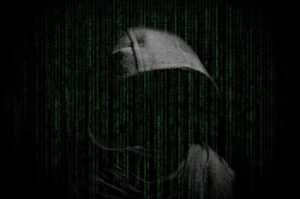Cybercrime group TA558, a small-scale cybercriminal actor, increases its malware attacks predominantly targeting Latin American hospitality, hotel, and travel companies besides Western Europe and North America. To spread a range of RATs with the capacity to steal data, they are boosting this year’s volume of malicious emails sent to hotels.
Identified by Proofpoint, researchers have already discovered 51 campaigns this year from the threat actor, initially discovered in 2018. Over the past four years, hacking tactics have evolved, leading to a rise in the quantity and kind of RATs employed in campaigns.
The attacker takes the identity of a legitimate user and traverses via several network systems until they reach their target after initially gaining access to an endpoint, such as through phishing or malware infection. Their goal is to gather data on numerous systems and accounts, obtain login details, escalate privileges, and ultimately gain access to the targeted payload.
Proofpoint analysis states, “TA558 shifted tactics and began using URLs and container files to distribute malware, likely in response to Microsoft announcing it would begin blocking VBA macros downloaded from the internet by default.”
TA558 progressed from sending emails with malicious Word documents that leverage Equation Editor flaws (such as a remote code execution bug associated with CVE-2017-11882) to disseminating malicious Office documents that contain VBA macros that download and install malware. However, as of 2022, the threat actor started using attachments that included container files, such as RAR and ISO files, rather than Office documents with macro functionality.
The perpetrator sends malicious emails using Portuguese, Spanish, and occasionally English using lures with reservations-related business-relevant subjects, including booking hotel rooms. They have switched between at least 15 known malware families over the past three years and utilised RATs, including Loda, Vjw0rm, and Revenge RAT.
They have occasionally used “Google Drive,” “Microsoft,” and “Firefox” in payload URLs or C2 domain names to imitate popular technology services. Researchers also discovered the threat actors in April distributing RevengeRAT using a brand-new lure based on a QuickBooks invoice; however, they claimed it’s not clear why the gang temporarily switched to this lure.
Threat Research and Detection’s Vice President Sherrod DeGrippo emphasised, “Organisations in these and related industries should be aware of this actor’s activities and take precautions to protect themselves.”

More Stories
Killnet and AnonymousSudan Collaborate to Launch Cyber Attacks on Western Organisations
In recent news, it has been reported that two Russia-sympathetic hacktivist groups, Killnet and AnonymousSudan, have allegedly launched a series...
$4000 Gone In An Instant: Mother Defrauded in Facebook Marketplace Car Deal
A mother of four is warning others to be cautious after believing she had purchased a safe and dependable car...
Shocking Scam: Sydney Family Loses $200K Life-Savings in Suncorp Spoofing Fraud
A family from Sydney has lost their life savings worth $200,000 due to a fraudulent scam. Peter and Madison, who...
Mysterious Money Transfer Leaves Couple Speechless: How They Got an Unsolicited $4000
A young couple in Melbourne claims their bank is making up a personal loan they do not understand. Ashley and...
Phishing + AI + Voice Cloning= Big Trouble: The New Way Criminals are Stealing Your Money
New Alert: Criminals use AI and voice cloning to trick you out of your money. Earlier this year, Microsoft unveiled...
‘Impossible to Spot’ Delivery Scam Email Targets Australia Post Customers – Don’t Fall Victim!
Unsuspecting shoppers should be cautious as a parcel delivery scam that is hard to distinguish targets Australia Post customers. Email...


